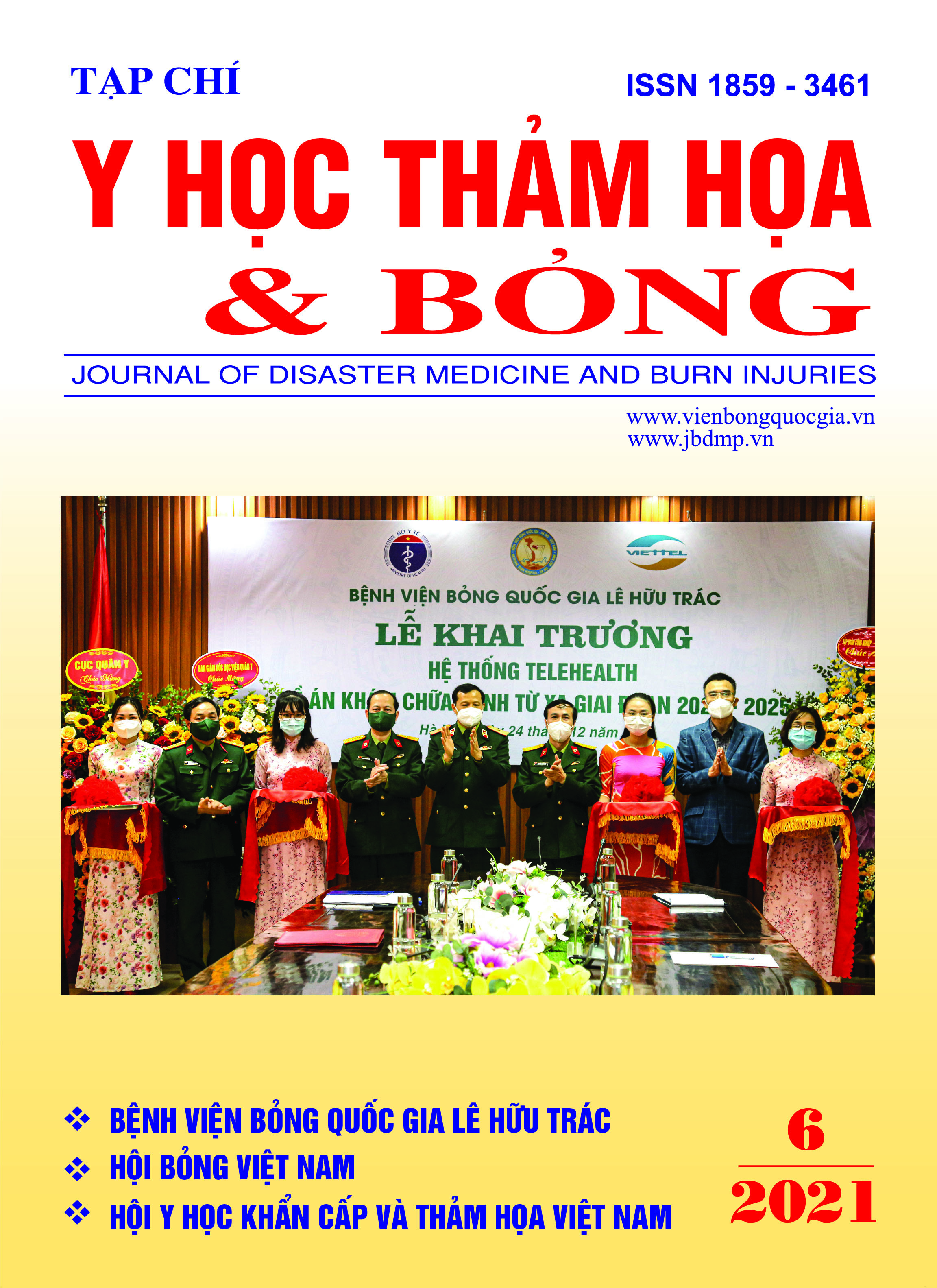General anesthesia for giant tumor resection and facial reconstruction in a patient with atrial fibrillation, hypertension, heart valve diseases (Case report).
Main Article Content
Abstract
General anesthesia for giant tumor resection and facial reconstruction in the elderly patients with atrial fibrillation, hypertension, and comorbidity valvular heart disease presents a major challenge for both anesthesiologists and surgeons in terms of the prevention and management of complications that may occur before, during, and after surgery.
A 74-year-old cachexia female suffered from a giant facial tumor compressing on the right eye, right nose, narrowing the left nasal cavity, growing into the palpate. She had atrial fibrillation, hypertension, comorbidity valvular heart disease. Before the surgery, she was received intravenous nutrition, maintained treatment of atrial fibrillation, hypertension, corrected electrolyte disturbances. She was scheduled to make complete resection of the tumor, skin flap reconstruction under endotracheal general anesthesia. She has inserted an endotracheal tube through a fiberoptic bronchoscope under sedation and analgesia. The hypotensive anesthesia was made by a combination of inhalational and intravenous anesthetics, analgesics, and esmolol intravenous infusion to manage intraoperative blood pressure.
Appropriate patient selection, optimal preoperative patient preparation, selection of appropriate anesthesia methods, close coordination with surgeons and cardiologists, careful monitoring, and timely management of intraoperative complications are decisive factors for successful surgical anesthesia in patients.
Article Details
Keywords
General anesthesia, giant facial tumor surgery, atrial fibrillation, hypertension, valvular heart diseases
References
2. Tadese Tamire, Habtamu Demelash, and Wosenyeleh Admasu, “Predictive Values of Preoperative Tests for Difficult Laryngoscopy and Intubation in Adult Patients at Tikur Anbessa Specialized Hospital” Hindawi Anesthesiology Research and Practice, vol.2019, 2019.
3. C. Rodrigo, “Induced hypotension during anesthesia, with special reference to orthognathic surgery,” Anesthesia Progress, vol. 42, no. 2, pp.41-58, 1995.
4. Sabry Mohamed Amin, Mohamed Gamal Elmawy, and Rabab Mohamed Mohamed, “Controlled Hypotensive Anesthesia in Children Undergoing Nasal Surgery” J Anesth Clin Res, vol.7, no.8, pp.1-8, 2016.
5. C.-S. Degoute, “Controlled hypotension: a guide to drug choice,” Drugs, vol. 67, no. 7, pp.1053-1076, 2007.
6. L. Strunin, “Organ perfusion during controlled hypotension,” British Journal of Anaesthesia, vol.47, no.7, pp.793-798, 1975.
7. M. J. Lindop, “Complications and morbidity of controlled hypotension,” The British Journal of Anaesthesia, vol.47, no.7, pp.799-803, 1975.
8. Michal Barak, Leiser Yoav, and Imad Abu el-Naaj, “Review article: Hypotensive anesthesia versus normotensive anesthesia during major maxillofacial surgery: a review of the literature” The Scientific World Journal, vol.2015, 2015.
9. Donald Wiest, “Esmolol A Review of its Therapeutic Efficacy and Pharmacokinetic Characteristics” Clinical Pharmacokinetics, vol.28, pp.190-202, 1995.
10. Laurent Lonjaret, Olivier Lairez, Vincent Minville, Thomas Geeraerts, “Optimal perioperative management of arterial blood pressure” Integrated Blood Pressure Control, vol.7, pp.49-59, 2014.
11. Hsiu-Rong Liao, Kin-Shing Poon, and Kuen-Bao Chen, “Atrial Fibrillation: An anesthesiologist’s perspective” Acta Anaesthesiologica Taiwanica, vol.51, pp.34-36, 2013.


